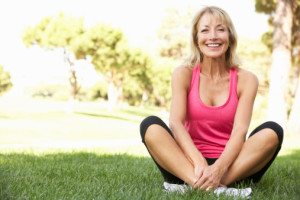Enjoying the many benefits of apartment living doesn’t mean you have to sacrifice the opportunity to plant and nurture a garden of your very own. Container gardening is perfectly apartment-friendly and a great way to enjoy the benefits of growing your own fresh produce or just adding natural beauty to your patio or balcony. Many plants do well in containers—particularly herbs, which have the added benefit of providing you with delicious ingredients for flavorful meals. Here are some tried-and-true tips to help make your apartment-friendly container garden grow!
1. Start with proper pots. To retain moisture, nutrients and a stable environment, it’s almost always best to start with as large a pot as possible. What it’s made of isn’t really important but you’ll find that there are pros and cons to pretty much any material when it comes weight, beauty and durability. We like terra-cotta because it’s natural, relatively lightweight, retains moisture and gains character with age; but there are also some beautiful plastic and fiberglass options out there.
2. Potting mix matters more than pots. The soil for your apartment container garden should be light and fluffy, like Pro-Mix from a nursery. It’s important to note that you’ll only need about 12 inches of soil and that many pots are much higher than that; so you can save on potting soil by filling the bottom of your pots with something that will displace the space while still allowing appropriate drainage. You’ll find rocks at the garden center for just this purpose; but this is also an excellent way to recycle small, empty water bottles! Throw a couple of sheets of newspaper over the bottles or rocks to get even more mileage out of your potting soil; and be careful not to pack the soil in too tightly. If you don’t want to buy container mix you can make your own!
Recipe for All-Purpose Container Gardening Mix
· 1 part all-purpose potting soil
· 1 part perlite
· 1 part moisture-retentive filler (like peat moss or coconut fiber)
· 1 part compost or composted cow manure
Remember that the nutrients in potting mix won’t last forever … you’ll want to replace the mix or add fresh nutrients regularly to keep your apartment container garden growing strong.
3. Choose your plants. Almost any herb will grow in an apartment container garden, particularly fennel, dill, rosemary, thyme, parsley, cilantro, oregano, mint, basil and sage. Veggies that do particularly well in containers include Swiss chard (comes in lots of colors!), cherry tomatoes, peppers, cucumbers, lettuces and spinach. Flowers are also an excellent choice, including sun-lovers like marigolds, petunias and lantana. If your garden is in partial shade try begonias, English ivy, coleus, or Boston fern; and for more shade, go for fuchsias, small hostas or impatiens.
4. Give them room to grow. It’ll be tempting to group plants closely together, particularly because you’ll want your apartment garden’s containers to look full and lush; but too much togetherness can be stressful. If you’re setting out with starters or seedlings do a little research to determine how large the plant is likely to grow and allow it the room to reach its full potential. Sweet Basil (and many other varieties of Basil) for example, is a fast-grower and will grow large and full, making it a great center plant for an herb pot. Sage likes to spread out. Oregano stays a little lower to the ground but will eventually fill out your pots nicely. Marjoram creeps and Thyme likes to hang over the edge making it a beautiful choice for the pot’s outside edges. Mint is an aggressive invader … give it a pot all to itself and get ready for a summer full of spectacular sweet tea and magnificent mojitos!
Remember too that plants often have different requirements for moisture and nutrition; so it’s good to choose compatible plants. Remember, too, that it’s possible to nest smaller containers within a larger one so your plants can get more targeted doses of what they like and need.
5. Water your containers regularly. Containers can tend to dry out more quickly than the ground so be sure to check soil daily and keep it nicely moist but not soggy. Remember to be courteous to your neighbors by noticing that your watering efforts might be spilling onto the balconies down below … pots with water-catching saucers beneath them will keep the peace between you and the resident of the apartment below whose balcony furniture is under your container garden. The smaller and more tightly-packed your container, the more water it may need. The old gardener’s rule is one inch of rain or water per week but your apartment garden might need a little more.
6. Watch out for wind! You don’t want your carefully tended veggies to end up as projectiles; so make sure the containers in your apartment garden are well anchored (large pots often do the trick, especially if they’re made of heavy terra cotta). Wind can be drying so keep an extra eye on soil moisture in the windy months.
7. Weathering the winter. Pots are particularly sensitive to temperature and especially to freezing and thawing. Check the soil often and make sure it stays moist (not wet, which can promote rot and suffocate roots). Big “estate-size” pots can usually be left out on your apartment’s patio or balcony because their mass serves as insulation. If you’re working with annuals, empty out small and medium-sized pots and set them aside for the season, then break them out again in spring and get ready to start your growing season again!


